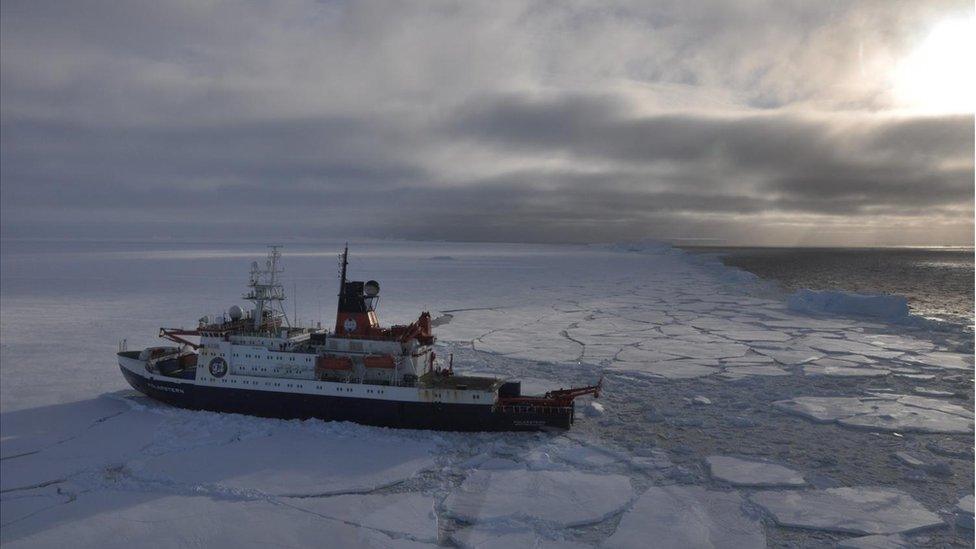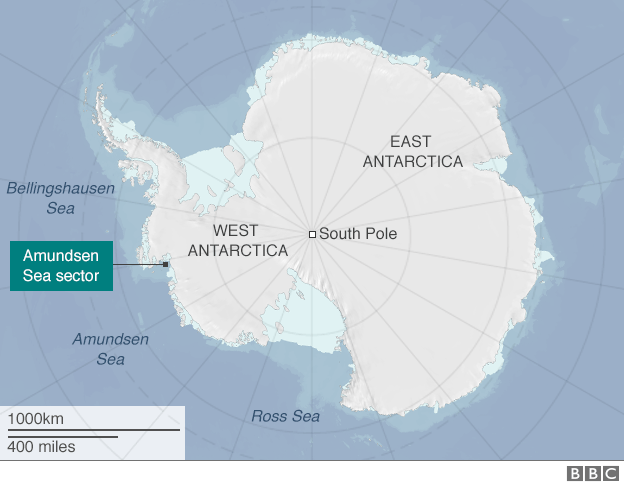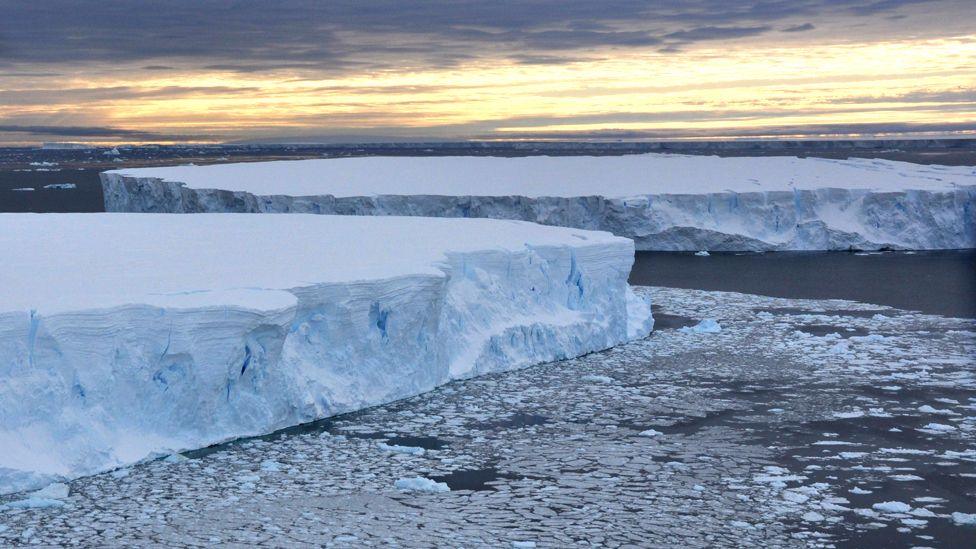Shells record West Antarctic glacier retreat
- Published

The data used in the study was collected over the last 20 years
Scientists are getting a much clearer picture of the retreat of the West Antarctic Ice Sheet over thousands of years, and of the forces driving it.
New research indicates that warm waters pulled up from the deep by strong winds sharply undercut glaciers from about 11,000 years ago to 7,500 years ago.
This incursion then stopped until it got under way again in the 1940s.
The findings are important because they inform our understanding about how the ice may respond in the future.
Today, the big glaciers that enter the ocean in a key sector called the Amundsen Sea Embayment are in a rapid withdrawal.
These ice streams, such as Pine Island and Thwaites glaciers, are colossal in scale - and their melting has become a significant contributor to global sea-level rise at around 1mm per decade.
The glaciers’ grounding lines - the places where they enter the ocean and become buoyant - are heading inland; as are the floating segments, or shelves, they push out in front themselves.
Dr Claus-Dieter Hillenbrand, a senior marine geologist at the British Antarctic Survey, explained: "We know today that the ice sheet in the Amundsen Sea is mainly influenced by this warm deep-water upwelling, which is very effectively melting the undersides of the ice shelves and weakening them, and because these shelves buttress the glaciers we therefore get the thinning of the glaciers, the acceleration in the flow speed of the glaciers and the retreat of their grounding lines."
Dr Hillenbrand and colleagues have been examining the shells of tiny marine organisms called foraminifera recovered from ocean-floor sediments in the Amundsen Sea Embayment.
These shells have chemical "fingerprints" that record the nature of the water in which they were formed.
For example, the ratio of different trace metals in the shells says something about how cold or warm the water was. And the different types of carbon incorporated into the shells reveal information about the age of the water.

In Antarctica, the surface waters are "young" and cold; young in the sense that they are in contact with the atmosphere.
The deep waters, on the other hand, have not seen the surface in a long time and are therefore considered "old" - but they are relatively warm.
Piecing together the distribution and fingerprint pattern of the shells, Dr Hillenbrand's team has been able to show that the warm deep-water would have welled up and spilled across the continental shelf in front of the glaciers to melt their fronts at the end of the last ice age - about 11,000 years ago.
This retreat operated until about 7,500 years ago.
Independent data has already indicated a coupling between the position of strong westerly winds and upwelling. The further north is the belt of westerlies, the weaker is the upwelling; the further south, the bigger the upwelling.

Pine Island Glacier calves huge tabular icebergs that drift away into the Southern Ocean
"We can detect the weakening of the circumpolar deep-water at 7,500 years," said Dr Hillenbrand.
"It has been documented through other data that there was a northern shift of these winds then. And around the 1940s, also independent data shows there must have been a southward shift of the belt. So we demonstrate that the circumpolar deep-water upwelling is indeed coupled to the wind system."
Some scientists have made the argument that the strengthening westerlies in recent decades can be linked to the ozone hole and the rise in greenhouse gases.
The sediments examined in the study are very modern in the geological context, but researchers are also engaged in drilling much deeper materials in the Amundsen Sea Embayment to get a much longer time perspective.
For example, scientists would like to get a detailed description of conditions during the last interglacial - the last major warm period on Earth - about 120,000 years ago.
Researchers suspect the West Antarctic Ice Sheet at that time became extremely denuded.
The big question is whether it could experience a similar withdrawal as the Earth warms as a consequence of rising levels of atmospheric carbon dioxide.
"As you know there are some computer models which say a West Antarctic Ice Sheet collapse has potentially already begun," Dr Hillenbrand told BBC News.
His team’s study has been published in the journal Nature, external.
Jonathan.Amos-INTERNET@bbc.co.uk, external and follow me on Twitter: @BBCAmos, external